British warship the HMS Richmond passed through the Taiwan Strait yesterday morning, according to a social media post from the frigate.
“After a busy period working with partners and allies in the East China Sea, we are now en route through the Taiwan Strait to visit Vietnam and the Vietnam People’s Navy,” the message on Twitter said.
The type 23 Royal Navy frigate is one of the ships deployed with the HMS Queen Elizabeth aircraft carrier and her task group on a global mission to visit more than 40 nations.
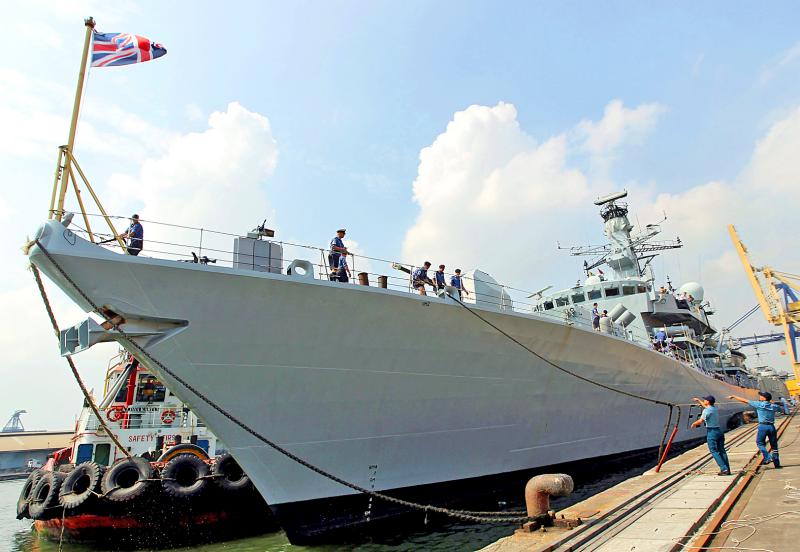
Photo: EPA
The aircraft carrier and task group earlier this month made a port call in Yokohama, Japan.
The British embassy in Tokyo said at the time that the deployment was “a powerful demonstration of the UK’s close and enduring partnership with Japan and the UK’s commitment to maritime security in the Indo-Pacific region.”
The passage through the Taiwan Strait came a week after British First Sea Lord Admiral Tony Radakin told Nikkei Asia that the Taiwan Strait is “international waters” and it can be used by any nation, not just by China.
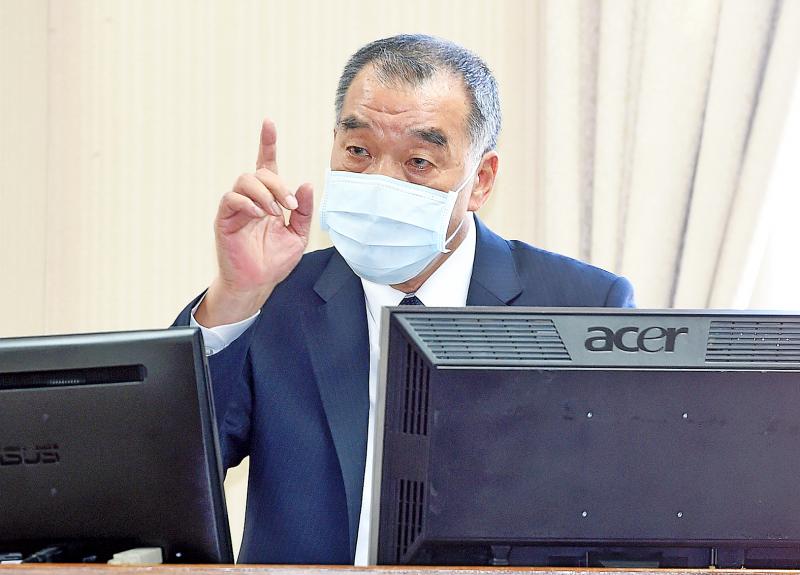
Photo: Liao Chen-huei, Taipei Times
Minister of National Defense Minister Chiu Kuo-cheng (邱國正) said in Taipei that he was not aware of the exact mission of the British warship that was passing through the Taiwan Strait, but that the armed forces have a clear grasp of all foreign vessels operating near Taiwan and would not intervene.
In related news, Chiu yesterday told a meeting of the Foreign Affairs and National Defense Committee at the legislature that Taiwan needs long-range, accurate weapons to properly deter a China that is rapidly developing systems it could use to attack the nation.
The government this month proposed extra defense spending of almost US$9 billion over the next five years, including on new missiles, as it warned of an urgent need to upgrade the nation’s weapons in the face of a “severe threat” from China.
Taiwan needs to let China know that it can defend itself, Chiu said.
“The missiles must be long-range, precise and mobile, so that the enemy can sense that we are prepared as soon as they dispatch their troops,” he said.
In a written report to the legislature, the ministry said that both medium and long-range missiles were being used in intercept drills at a key testing facility on the southeastern coast.
Chiu declined to give details of the range of those missiles.
The ministry gave an unusually stark assessment of China’s abilities in its annual report, saying it could “paralyze” Taiwan’s defenses and is able to fully monitor its deployments.
It is important that Taiwanese are aware of the danger facing them, Chiu said.
Asked what China would attack first in the event of a war, Chiu said that it would be Taiwan’s command and communications abilities.
“On this the Chinese communists’ abilities have rapidly increased. They can disrupt our command, control, communications and intelligence systems, for example with fixed radar stations certainly the first to be attacked,” he said. “So we must be mobile and stealthy.”
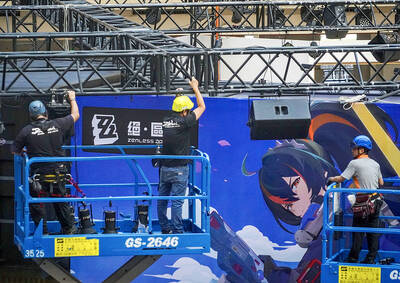
Taiwan is projected to lose a working-age population of about 6.67 million people in two waves of retirement in the coming years, as the nation confronts accelerating demographic decline and a shortage of younger workers to take their place, the Ministry of the Interior said. Taiwan experienced its largest baby boom between 1958 and 1966, when the population grew by 3.78 million, followed by a second surge of 2.89 million between 1976 and 1982, ministry data showed. In 2023, the first of those baby boom generations — those born in the late 1950s and early 1960s — began to enter retirement, triggering

ECONOMIC BOOST: Should the more than 23 million people eligible for the NT$10,000 handouts spend them the same way as in 2023, GDP could rise 0.5 percent, an official said Universal cash handouts of NT$10,000 (US$330) are to be disbursed late next month at the earliest — including to permanent residents and foreign residents married to Taiwanese — pending legislative approval, the Ministry of Finance said yesterday. The Executive Yuan yesterday approved the Special Act for Strengthening Economic, Social and National Security Resilience in Response to International Circumstances (因應國際情勢強化經濟社會及民生國安韌性特別條例). The NT$550 billion special budget includes NT$236 billion for the cash handouts, plus an additional NT$20 billion set aside as reserve funds, expected to be used to support industries. Handouts might begin one month after the bill is promulgated and would be completed within
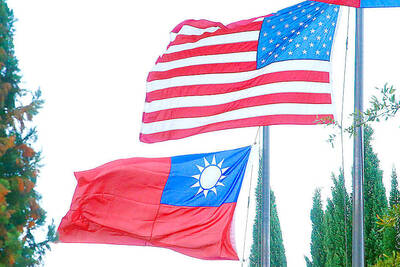
NO CHANGE: The TRA makes clear that the US does not consider the status of Taiwan to have been determined by WWII-era documents, a former AIT deputy director said The American Institute in Taiwan’s (AIT) comments that World War-II era documents do not determine Taiwan’s political status accurately conveyed the US’ stance, the US Department of State said. An AIT spokesperson on Saturday said that a Chinese official mischaracterized World War II-era documents as stating that Taiwan was ceded to the China. The remarks from the US’ de facto embassy in Taiwan drew criticism from the Ma Ying-jeou Foundation, whose director said the comments put Taiwan in danger. The Chinese-language United Daily News yesterday reported that a US State Department spokesperson confirmed the AIT’s position. They added that the US would continue to
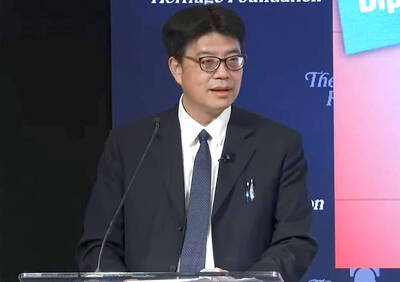
IMPORTANT BACKER: China seeks to expel US influence from the Indo-Pacific region and supplant Washington as the global leader, MAC Minister Chiu Chui-cheng said China is preparing for war to seize Taiwan, Mainland Affairs Council (MAC) Minister Chiu Chui-cheng (邱垂正) said in Washington on Friday, warning that Taiwan’s fall would trigger a regional “domino effect” endangering US security. In a speech titled “Maintaining the Peaceful and Stable Status Quo Across the Taiwan Strait is in Line with the Shared Interests of Taiwan and the United States,” Chiu said Taiwan’s strategic importance is “closely tied” to US interests. Geopolitically, Taiwan sits in a “core position” in the first island chain — an arc stretching from Japan, through Taiwan and the Philippines, to Borneo, which is shared by